The real fashion revolution isn’t happening on the catwalks of Bollywood or the global runways,it’s unfolding in the humble looms and nimble fingers of Indian artisans. As fast fashion continues to dominate, a new wave is emerging, the fusion of traditional handloom techniques with cutting-edge fashion technology. This blend is not just rejuvenating handloom textiles but is also propelling them into a modern spotlight.

The Power of Digital Storytelling
Gone are the days when handloom textiles were confined to dusty corners and forgotten villages. Today, they are making a splash on digital platforms, capturing a global audience with their timeless beauty and contemporary appeal. Fashion icons like Anita Dongre have elevated handloom sarees to global prominence, turning them into symbols of style and heritage. Meanwhile, influencers such as Ishaborah and Tiptopped are proving that handlooms can be both traditional and trendy, pairing sarees with modern attire and breaking old stereotypes.
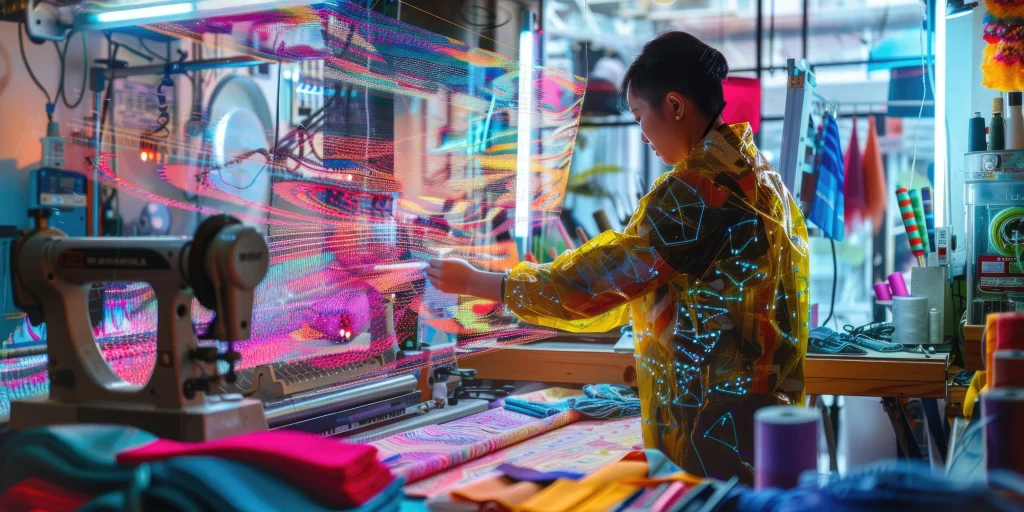
Brands like Raw Mango and FabIndia are leveraging technology to showcase these age-old crafts worldwide. Sanjay Garg’s short film series “Point of Origin” is creating meaningful dialogues around textiles and culture, while Raw Mango’s digital strategies highlight the intersection of tradition and technology. Their use of e-commerce platforms demonstrates how handloom products can reach a global market, blending historical craftsmanship with modern accessibility.
Rahul Mishra’s Vision for Handloom Revival
Designer Rahul Mishra has made significant strides in integrating technology with traditional weaving practices. His documentary, “The Warp and Weft of India,” highlighted the challenges and triumphs of handloom weavers across various clusters. Mishra’s use of computer-aided design tools has revolutionised the handloom industry by enhancing precision and efficiency. His collaboration with master weavers, such as Hukum Koli, exemplifies how technology can elevate traditional skills, resulting in more intricate and captivating designs. Brands like Anita Dongre and Good Earth are following Mishra’s lead, incorporating technological advancements into their design processes and supply chains to further globalise and elevate Indian handloom.
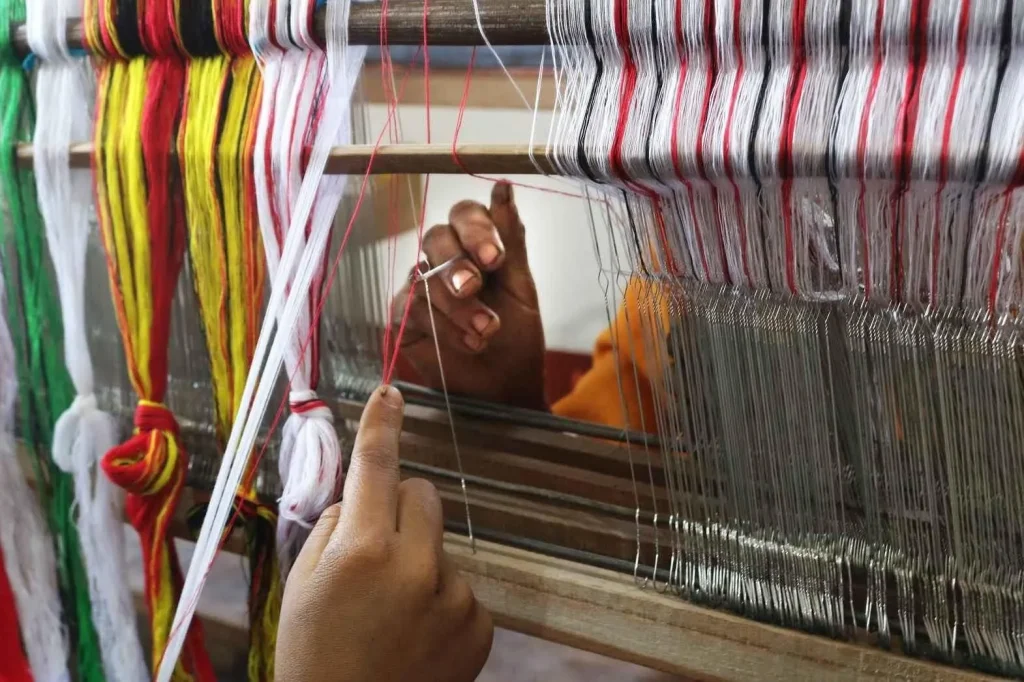
Empowering Weavers with Next-Gen Tech
Fashion tech is not just about aesthetics; it’s also about empowerment. The DigiBunai software, developed by the Indian government, is a prime example of how technology supports weavers. This open-source CAD tool optimises design creation, allowing weavers to preview their work digitally in various colour and design combinations before they start weaving. This kind of technology empowers artisans with market insights and helps ensure their craft remains commercially viable.
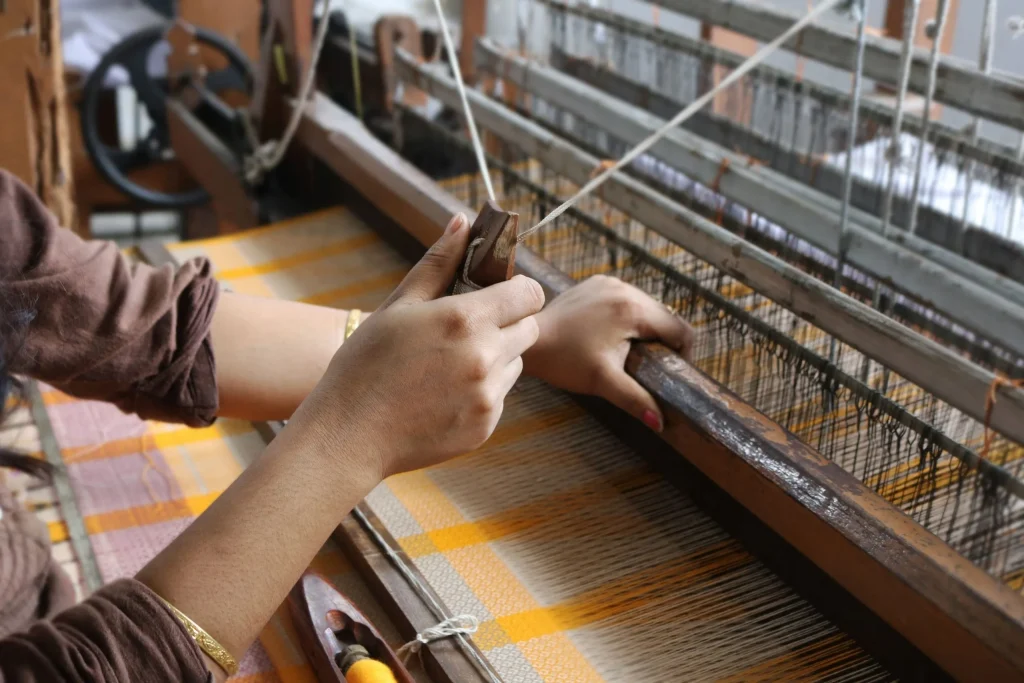
Platforms like GoCoop and Amazon Karigar are bridging the gap between weavers and consumers, eliminating intermediaries and ensuring fair prices. This direct connection not only helps weavers get fair compensation but also introduces their craftsmanship to a broader audience. Brands like Neeru’s and Khadi India exemplify this trend, using digital tools to create emotional and cultural connections with their customers.
Preserving Heritage through Digital Weaving
Digital weaving technology is transforming the handloom industry by making intricate patterns that once took days to create now achievable in hours. Advanced digital looms allow for precise designs and fine details, merging traditional expertise with modern efficiency.
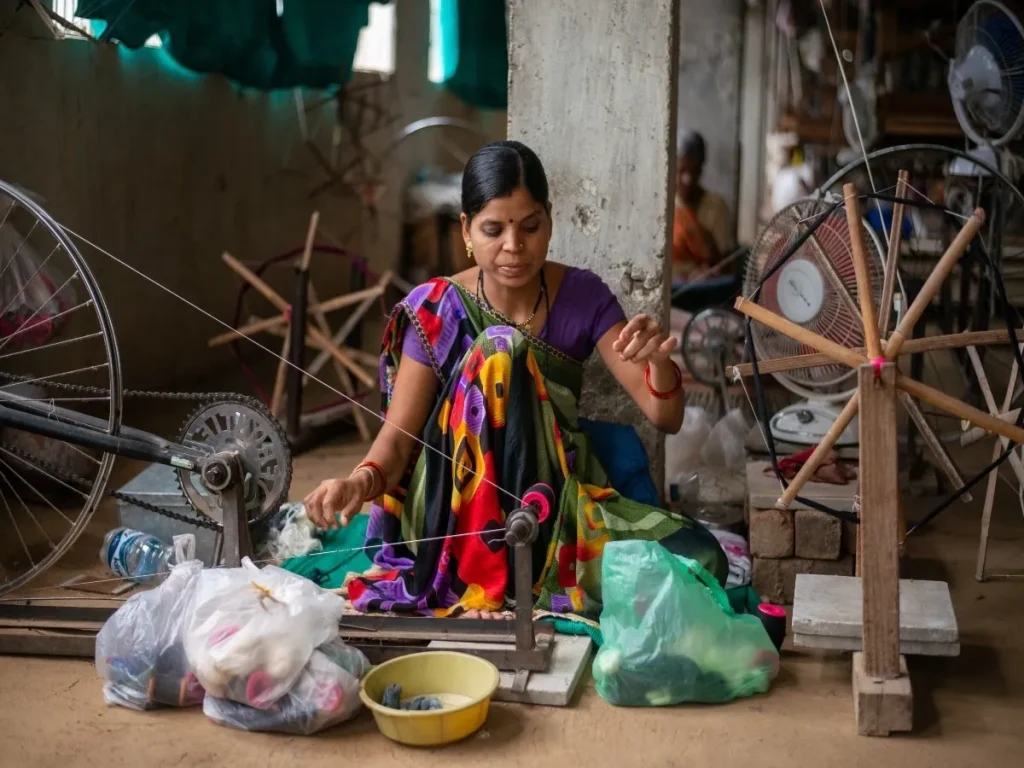
Smart Textiles and Augmented Reality
Imagine sarees that regulate body temperature or change colour with a smartphone touch. Smart textiles are revolutionising the saree industry, offering not only aesthetic appeal but also functional benefits. These textiles, embedded with sensors and microprocessors, can monitor health, adjust temperature, or provide notifications. Similarly, augmented reality (AR) is enhancing the shopping experience, allowing consumers to visualise sarees in various settings before purchase.
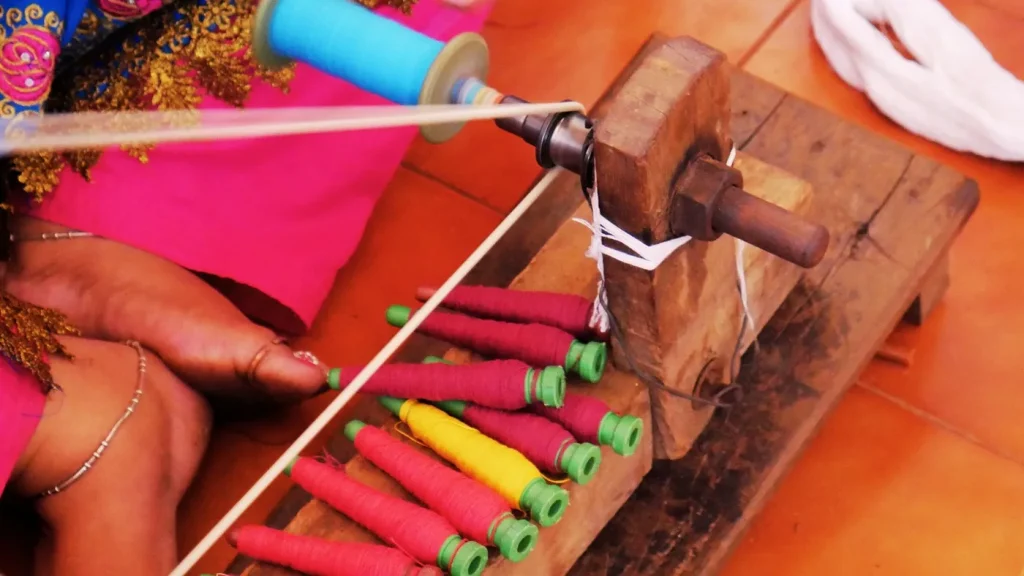
Sustainable Practices in the Saree Industry
Sustainability is becoming a core focus in the saree industry. Designers and consumers are increasingly opting for eco-friendly materials such as organic cotton and bamboo silk, and natural dyes instead of harmful chemicals. Companies are adopting zero-waste practices, recycling fabric scraps, and reducing water usage, reflecting a growing commitment to environmental stewardship.
The Rise of E-Commerce and Future Trends
E-commerce platforms have revolutionised the saree market, making it accessible to a global audience and exposing smaller regional weavers to international consumers. The rise of 3D printing and AI in fashion design promises even more customization and innovation in the future, offering personalised recommendations and intricate designs that reflect individual tastes.
The integration of fashion technology with traditional handloom practices is not only preserving India’s rich textile heritage but also propelling it into the future. This blend of tradition and innovation highlights the potential for handloom to thrive in a modern, global marketplace. What are your thoughts on this fusion of fashion and technology? Share your insights in the comments below.
KEYWORDS: Fashion technology, Indian handloom industry, empowering weavers, digital storytelling, smart textiles, augmented reality, sustainable practices, e-commerce, 3D printing, handloom preservation, innovation in textiles, cultural heritage, traditional craftsmanship, modern fashion
